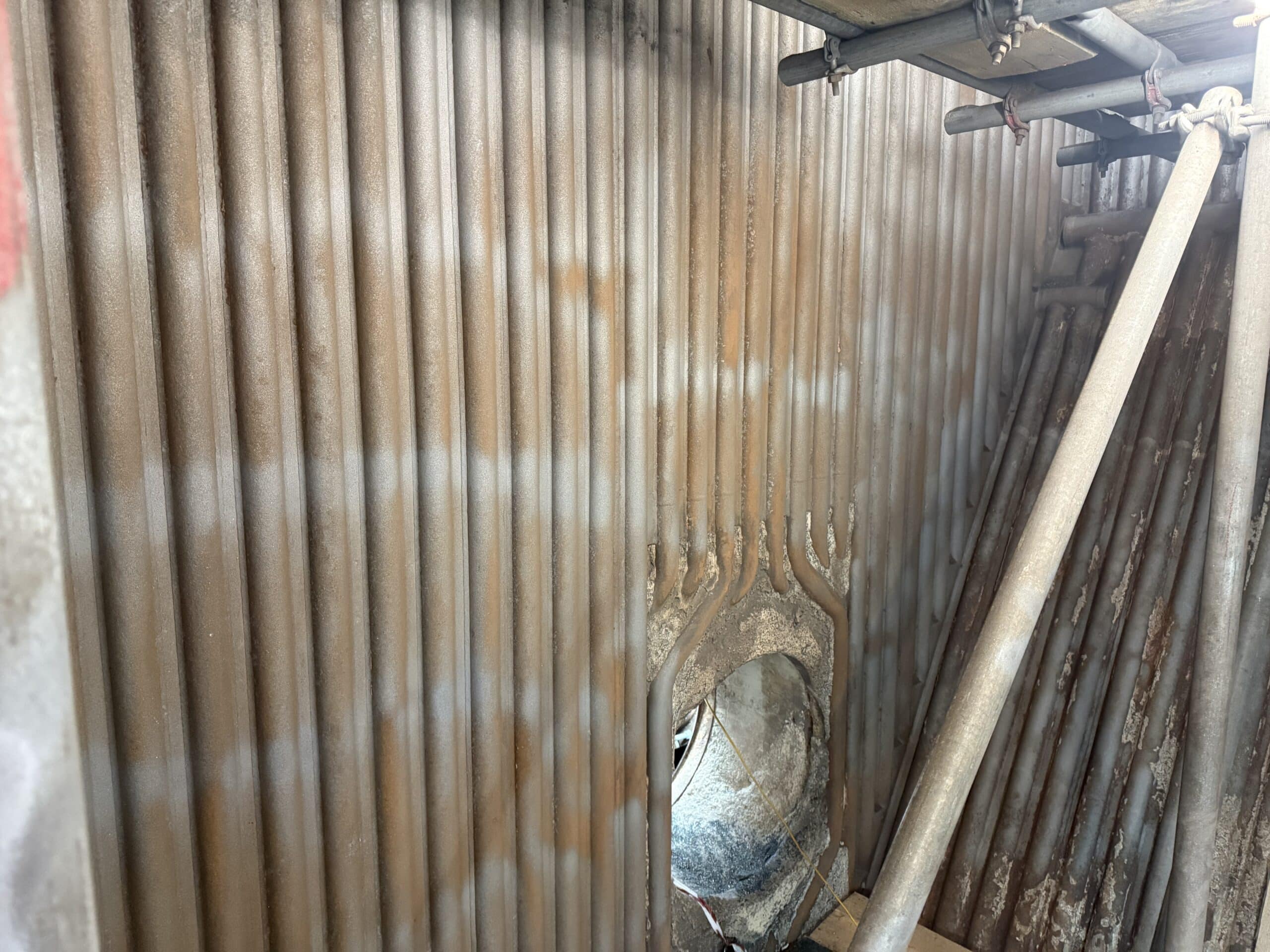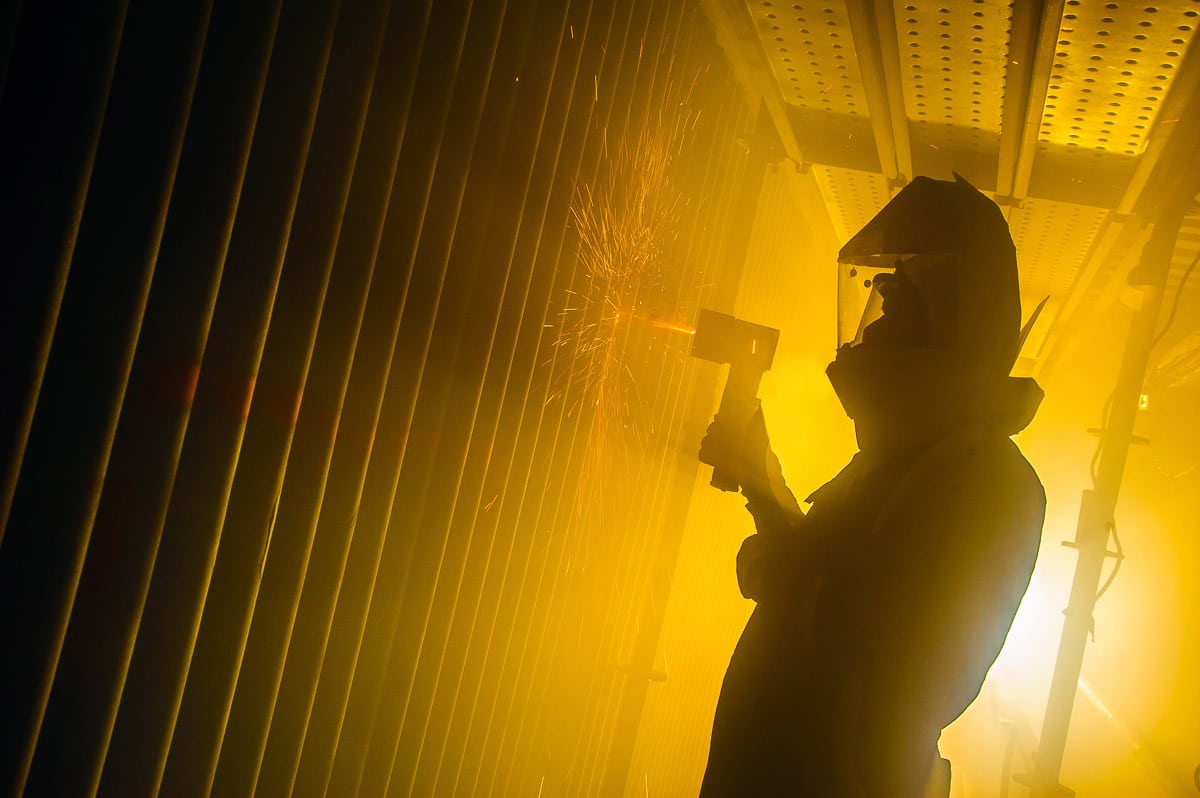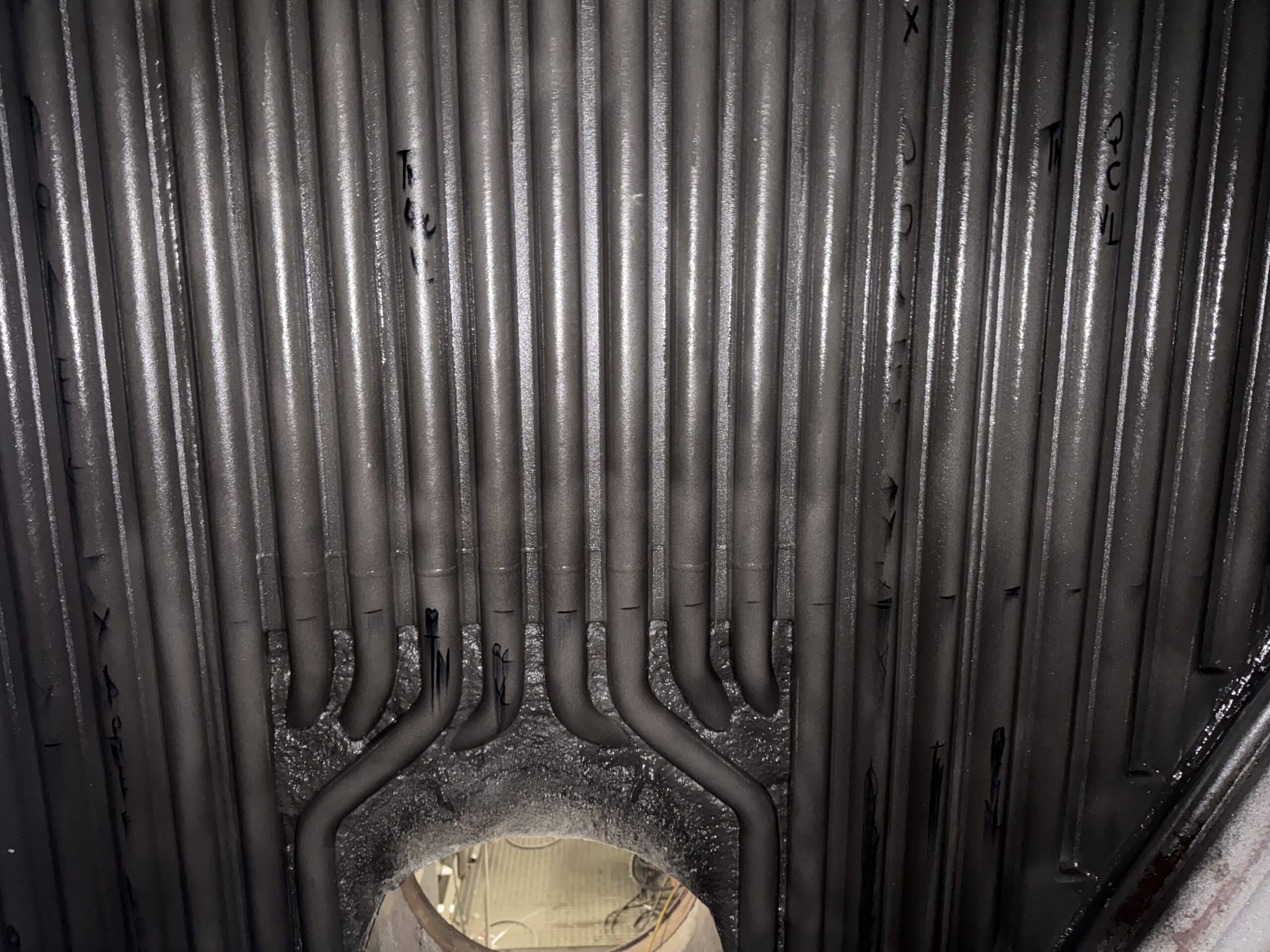Biomass Power Station Preventing Boiler Tube Failure with HVTS®
A UK-based biomass power station was experiencing significant chlorine corrosion issues in the boiler waterwall tubes. Non-destructive testing (NDT) had revealed concerning tube thinning patterns throughout several critical areas, including the front and rear walls, left/right side walls, bull nose, and horizontal pass sections.
The facility’s maintenance team faced the challenge of protecting these areas against further deterioration during their planned outage in February 2025. In just six days, a total of 168 m² (1,808 ft²) of boiler surfaces were successfully coated, ensuring rapid turnaround and long-term corrosion resistance.
Consequences of Boiler Tube Thinning
The NDT mapping clearly showed areas of tube thinning that, if left unaddressed, could have led to tube failures. For a biomass power facility, such failures would result in:
- Unplanned emergency outages disrupting power generation
- Significant repair costs outside of budgeted maintenance periods
- Lost revenue from decreased plant availability
- Additional costs from emergency procurement of replacement parts
- Safety risks to personnel from sudden steam leaks
- Potential damage to adjacent equipment
- Disruption to the plant’s power supply commitments
The maintenance team recognized that addressing these issues proactively during a planned outage would be significantly more cost-effective than responding to emergency failures.

Solution Options Considered
The facility evaluated two primary solutions for protecting the tubes.
Option 1 Weld Overlay
Pros:
- Established technology with proven track record
- Relatively thick protective layer
- Familiar to many maintenance contractors
Cons:
- Time-consuming application process
- Longer outage times required for installation
Option 2 High Velocity Thermal Spray (HVTS®)
Pros:
- Two to three times as fast as weld overlay application
- No structural distortion of tubes
- Bespoke alloy selection for specific corrosion conditions
- Compatible with existing weld overlays
Cons:
- Relatively newer technology
- Requires specialized application equipment and expertise
- Relatively thinner protective layer compared to weld overlay
Selected Solution
Following careful evaluation, the facility selected HVTS (High-Velocity Thermal Spray) with IGS alloy cladding and surface conditioner. This solution was chosen to protect 168.7 m² of developed tube surface area across multiple critical zones in the boiler.
The facility had previously implemented smaller HVTS applications (10.0 m² in July 2023 and 3.6 m² in December 2023), which had performed well, giving them confidence to proceed with this more extensive application.

Decision Factors
Several key factors influenced the decision to select HVTS over weld overlay:
1. Installation Speed
HVTS application could be completed within the facility’s planned 6-day outage window, which was not feasible with weld overlay. This minimized downtime and revenue loss.
2. Cost Effectiveness
The HVTS offered a significant cost saving compared to Inconel weld overlay when accounting for both direct application costs and the value of reduced outage time.
3. Previous Success
The facility had positive experiences with smaller HVTS applications in previous outages, providing confidence in the technology.
4. Customized Protection
The specialized IGS alloy was selected specifically for the biomass boiler environment, offering targeted protection against the specific corrosion/erosion challenges.

Solution Implementation
The HVTS cladding was applied over a 6-day period in February 2025. The project required careful coordination with other maintenance activities during the outage. The plant’s ID fan was set up to provide proper ventilation during the application process, ensuring optimal application conditions.
Results and Benefits
The HVTS application was completed within the planned timeline with no safety incidents. Key benefits included:
1. Schedule Adherence
The project was completed within the planned 6-day window, allowing the facility to return to operation on schedule. This would not have been possible with a weld overlay solution.
2. Comprehensive Protection
The full scope of 168.7 m² of at-risk boiler tube surfaces received protection, addressing all areas identified through NDT as having reduced wall thickness.
3. Quality Assurance
Post-application inspection confirmed that the application was successful and met all quality requirements, with thickness measurements taken every 300 mm by 300 mm across the protected areas to ensure consistent coverage.
4. Extended Asset Life
The HVTS application is expected to significantly extend the life of the boiler tubes by preventing further metal wastage from corrosion and erosion.
5. Cost Savings
The facility realized a significant cost saving compared to the alternative of Inconel weld overlay when considering both direct costs and the value of avoiding extended downtime.
Long-Term Performance
This installation builds upon the success of smaller HVTS applications at the same facility in 2023. Those earlier applications have been performing well during regular inspections, providing confidence in the long-term efficacy of this solution. The facility plans to inspect the newly applied HVTS cladding during the next scheduled outage to monitor its performance and collect data that will inform future maintenance decisions.
Proactive protection, zero distortion, and six days to long-term reliability.
That’s Asset Vitality.
Free consultation with an IGS Subject Matter Expert
IGS is here to provide information, answer questions and create an effective solution for your needs.
